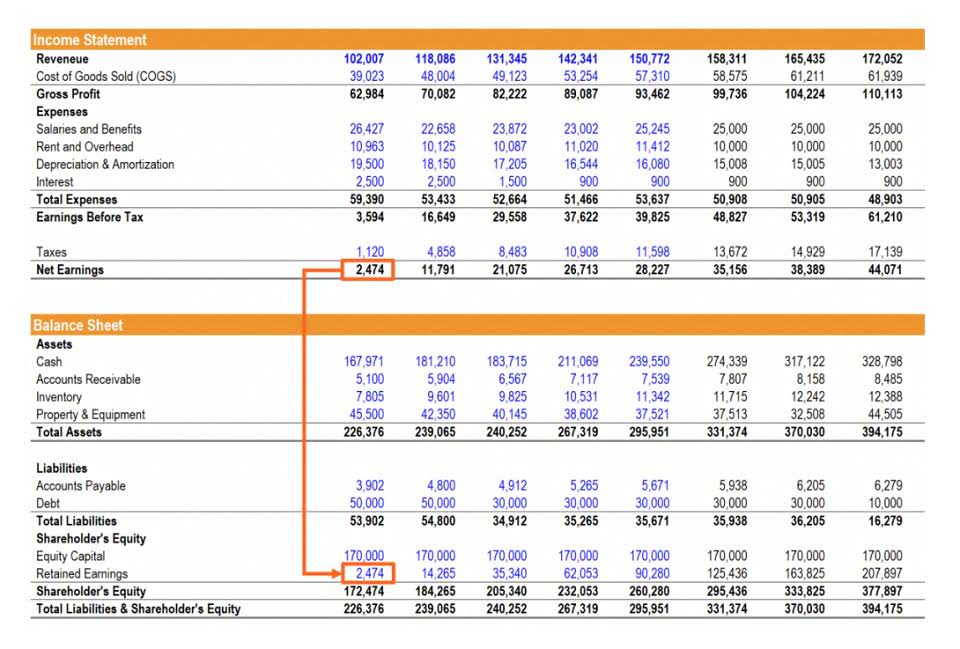
The total equity of a business is derived by subtracting its liabilities from its assets. This is an essential item that is reviewed by many creditors, lenders, and investors, since it is a strong indicator of the financial strength of a business. A business with a large amount of total equity is in a better position to cover its liabilities, while one with a negative equity balance could be on the verge of bankruptcy. Company or shareholders’ equity is equal to a firm’s total assets minus its total liabilities. Company equity is an essential metric when determining the return being generated versus the total amount invested by equity investors.
- The difference between all your assets and all your liabilities is your personal net worth.
- As a rule, short-term debt tends to be cheaper than long-term debt and is less sensitive to shifts in interest rates, meaning that the second company’s interest expense and cost of capital are likely higher.
- Over 1.8 million professionals use CFI to learn accounting, financial analysis, modeling and more.
- It is also called shareholders’ equity in corporate settings with this definition.
- Banks carry higher amounts of debt because they own substantial fixed assets in the form of branch networks.
- It is calculated by subtracting total liabilities from total assets of the company.
- Higher D/E ratios can also tend to predominate in other capital-intensive sectors heavily reliant on debt financing, such as airlines and industrials.
Examples of total equity are common stocks, preferred stocks, owner’s equity, and shareholder’s equity. Owner’s equity is for privately hed companies while shareholder’s equity is for corporations. Unlike public corporations, private companies do not need to report financials nor disclose financial statements. Nevertheless, the owners and private shareholders in such a company can still compute the firm’s equity position using the same formula and method as with a public one. The accounting equation states that a company’s total assets are equal to the sum of its liabilities and its shareholders’ equity. It can be looked at on its own and in conjunction with other statements like the income statement and cash flow statement to get a full picture of a company’s health.
Total Equity and Return on Equity
Critics of concierge medicine say the practice exacerbates primary care shortages, ensuring access only for the affluent, while driving up health care costs. On Friday, shareholders in Digital World Acquisition Corp. voted to approve a merger with the former president’s Trump Media & Technology Group, the private firm that owns his social media platform Truth Social. This number is the sum of total earnings that were not paid to shareholders as dividends.

It can also be used by investors to see if there is a sufficient amount of equity piled up to press for a dividend. And finally, it can be used by suppliers to see if a business has accumulated a sufficient amount of equity to warrant being extended credit. The New Ordinary shares were issued at a price of 30.43 pence per Ordinary share, comprising the most recent total equity net asset value less the dividend of 0.78 pence per Ordinary share. As a highly regulated industry making large investments typically at a stable rate of return and generating a steady income stream, utilities borrow heavily and relatively cheaply. High leverage ratios in slow-growth industries with stable income represent an efficient use of capital.
Ownership and leadership
Another study from Pomona College in 2019 verified earlier research that found clever tickers tend to perform better, partly because they are more memorable to investors. We asked some of the most curious minds in life sciences and healthcare to share thoughts on their careers, the future of health and more. Each participant drew questions and shared their insights, knowledge and some personal fun facts that left us inspired about the future of health and wellness.
If investors want to evaluate a company’s short-term leverage and its ability to meet debt obligations that must be paid over a year or less, they can use other ratios. The equity ratio is a financial metric that measures the amount of leverage used by a company. It uses investments in assets and the amount of equity to determine how well a company manages its debts and funds its asset requirements. Shareholders’ equity is the total value of the company expressed in dollars. Put another way, it is the amount that would remain if the company liquidated all of its assets and paid off all of its debts. The shareholders’ equity number is a company’s total assets minus its total liabilities.
Hospitals cash in on a private equity-backed trend: Concierge physician care
It is also the most heavily relied on approach, as it incorporates all aspects of a business and is, therefore, considered the most accurate and complete measure. In finance, equity is typically expressed as a market value, which may be materially higher or lower than the book value. The reason for this difference is that accounting statements are backward-looking (all results are from the past) while financial analysts look forward, to the future, to forecast what they believe financial performance will be. The derived amount of total equity can be used by lenders to determine whether there is a sufficient amount of funds invested in a business to offset its debt.
